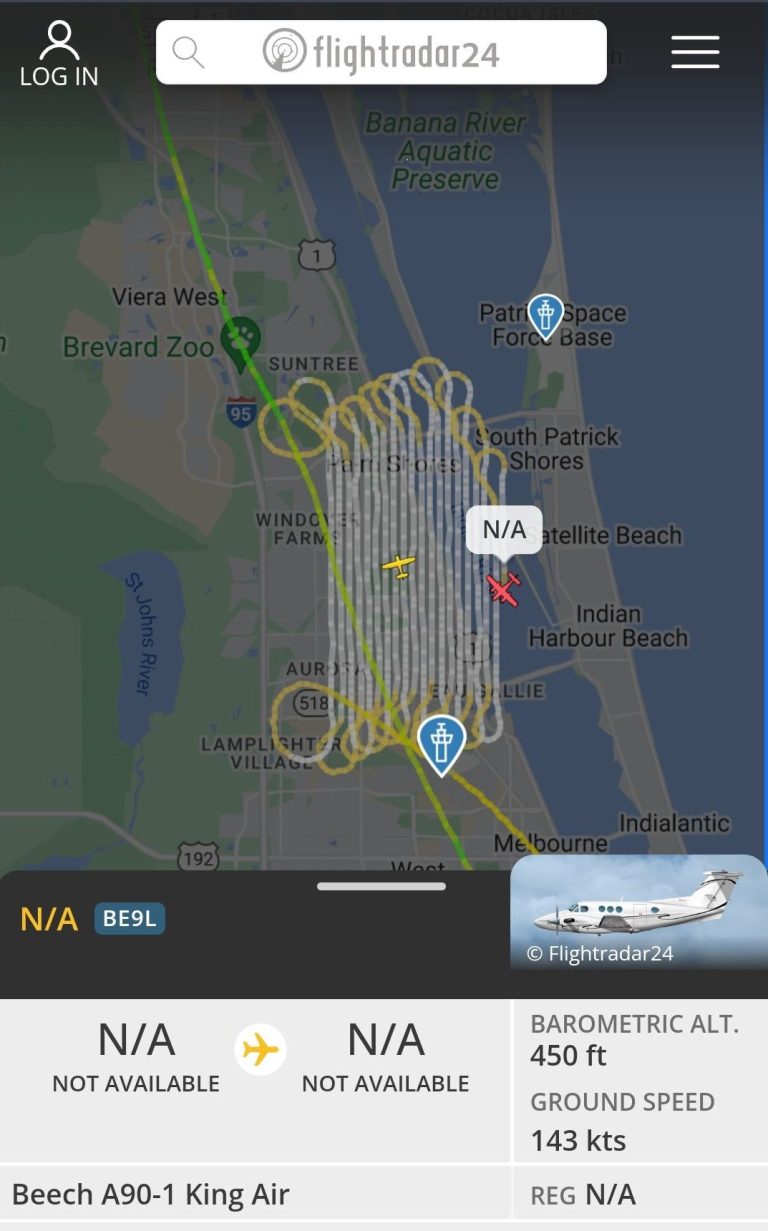Brevard County has recently initiated its mosquito control measures, which officials say is a crucial step in ensuring the health and safety of its residents.
As the Hurricane Milton passed and dumped heavy rains in our area, the mosquito population tends to rise, leading to increased concerns about illnesses such as West Nile Virus and Zika. The county's efforts include targeted spraying in areas known for high mosquito activity, which aims to reduce their numbers effectively.
Residents are encouraged to take preventive measures, such as eliminating standing water around their homes and using repellents when outdoors.

Aircraft Owned by the United States Army
The Beech A90-1 King Air, which is owned by the U.S. and is contracted out to state and local governments, is a twin-engine turboprop aircraft that has gained recognition for its versatility and performance.
According to records, the aircraft was introduced in 1964 and has been manufactured since 2001.
This particular aircraft was seen and spotted by several residences in the Melbourne area last night around 12:30am.
According to Flightradar24, the plane was flying between 200 and 400 feet in altitude for several hours spraying for mosquitos.
The pesticide used during aerial applications is called Anvil 10+10, an EPA-registered product extensively tested and used in both ground-level and aerial spraying in the U.S. to control mosquitoes. Anvil 10+10 contains two active ingredients: Sumithrin and Piperonyl butoxide.
Anvil 10+10, a pesticide that has garnered attention for its effectiveness in controlling mosquito populations. Anvil 10+10 is a widely used insecticide that combines two active ingredients, providing a dual approach to pest management.
According to officials, the pesticide is designed to be applied in aerial applications, which allows for widespread coverage in areas that are prone to mosquito-borne diseases.
According to Dale L, an expert of these operations, he says that the insecticide is oil based.
"It adheres to the waxy cuticle of insects and will also adhere to the oily skin of vertebrates (humans)", Dale tells The Blake Moia Show.
"However, it will not adhere to the moist surfaces of person’s respiratory track or eyes. The calculated LD50 dermal exposure for Anvil 10 + 10 is 2,000 mg/kg. That is 0.07 ounces to 2.2 pounds. That would be 3.5 ounces for a 110 pound person. At the one ounce per acre application rate, an exposed, standing in the open, nude person, who weighs 110 pounds, would be exposed to less than 1/4,000 of the dose which could theoretically put them at risk of death. That assumes that the entire insecticide amount is absorbed almost instantly and not gradually degraded as it is absorbed."
He goes on the say, "Aerial ULV equipment puts out ULV (ultra low volume) droplets of 30 microns in diameter. Each droplet is just 1/1,000 of an inch across. One ounce of fluid is about 30 cc which is about 3 cm cubed. 3 cm is a little more than one inch. Thus one ounce will result in more than 1,000 x 1,000 x 1,000 droplets. Aka, more than a billion droplets from just one ounce of insecticide. There are 6.27 million square inches in an acre. So on average, there are about 160 droplets per square inch."
Dale tells us that mosquitoes have a relatively large surface area (long legs, wings, skinny body) to a very small mass. Thus if even one droplet impacts a mosquito, it has enough insecticide to kill the mosquito. Larger insects, such as moths, should not be killed if the dosage and droplet size are correct and should not cause harm to The Indian River Lagoon.
FROM THE BLAKE MOIA SHOW ARCHIVES
©Copyright 2024. All rights reserved. The Blake Moia Show. Privacy Policy
We need your consent to load the translations
We use a third-party service to translate the website content that may collect data about your activity. Please review the details in the privacy policy and accept the service to view the translations.


























































































